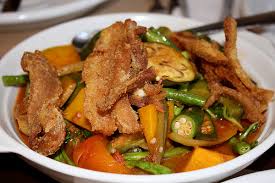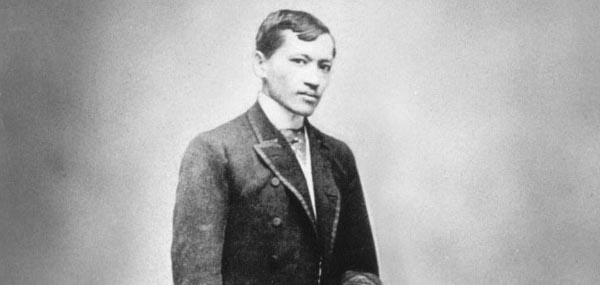Submitted by admin on Tue, 08/27/2013 - 07:38
Sinulog, Cebu’s biggest and most popular festival, is celebrated every third Sunday of January. It is to honor the Catholic Church’s Santo Niño de Cebu. This festival is characterized by a very long parade with many groups of persons dressed in colorful costumes while dancing Sinulog through the streets. (Read also:
Mga Proyekto at Festival ukol sa Pagtangkilik sa Sariling Produkto)
The following are 10 remarkable facts about Sinulog:
1. Sinulog comes from the Cebuano word “sulog,” a term which describes the back-and-forth movement of water currents.
Submitted by admin on Tue, 08/27/2013 - 07:20
The province of Laguna is located southeast of Metro Manila, the capital of the Philippines. Laguna was named after the Spanish word “laguna” which literally means lagoon or lake. The province’s previous complete name given by the Spaniards was “La Provincia de la Laguna de Bay.”
The following are 20 Interesting facts about Laguna:
1. Laguna was founded in July 28, 1571. It is now more than 400 years old (435 years old) as a province.
Submitted by admin on Tue, 08/13/2013 - 06:05
Melchora Aquino y de Ramos (January 6, 1812 – March 2, 1919) was raised by prosperous farmer parents, Juan Aquino and Valentina de Aquino, at Banlat, Balintawak, Quezon City. She was well known as a great Filipino Revolutionist against the Spanish colonizers. She earned the name “Tandang Sora” for being an elderly mother to the Katipueros, that despite her old age, she still managed to fight for independence.
The following are 10 interesting information about Tandang Sora.
1. According to history, she never attended school because of financial inability. What’s amazing though is that despite her being unschooled, she was noticeably literate and highly intelligent, which was observed even during her very young age. (pinoyforum.com)
Submitted by admin on Tue, 08/06/2013 - 05:24
10 Funny Things About Pinoy (Filipinos)

Submitted by admin on Mon, 08/05/2013 - 23:48
Philippine folklore refers to the traditional stories and explanations passed down the country. It includes a list of weirdmythicalcreatures that have stood the test of time. Just mention the terms kapre, aswang, engkanto, tiyanak, and tikbalang and you will get most Filipinos, especially the kids, turning into frightened brats.
The following are some unpopular mythical creatures that have made our mythology even more interesting and—of course—horrific.
1. BAL BAL is scavenger-monster with a thirsty appetite for dead human bodies. “Also known as maninilong among the natives of Catanauan, Quezon, this vampire-like creature prefers to prey on corpses. With a long, razor-sharp claws and a sense of smell that may be 10 times more sensitive than dogs’, Bal Bals easily find its next meal on cemeteries and even funerals.” (filipiknow.net)
Submitted by admin on Mon, 08/05/2013 - 06:21
 PINAKBET, an Ilocano dish, is stewed vegetables commonly composed of eggplant, bitter melon (ampalaya), okra, and tomatoes. It is seasoned with ‘bagoong isda’ or thick salted fish sauce.
PINAKBET, an Ilocano dish, is stewed vegetables commonly composed of eggplant, bitter melon (ampalaya), okra, and tomatoes. It is seasoned with ‘bagoong isda’ or thick salted fish sauce.
The following are 10 interesting things about this dish:
1. Eating nutritional dish “pinakbet” can prevent diseases like diabetes. (neonate28.blogspot.com)
2. Pinakbet or pakbet is an indigenous Filipino dish which is a specialty of the northern regions of the Philippines.
Submitted by admin on Sat, 07/27/2013 - 02:06
Jose Rizal's Education

THE FAMILIAR STATEMENT that Doña Teodora was Rizal’s first teacher is not just a sort of ‘venerating’ his mother who sacrificed a lot for our hero. It was a technical truth.
Submitted by admin on Sat, 06/28/2025 - 04:24
Mga Isyu at Hamon sa Pagkamamamayan: Karapatang Pantao sa Gitna ng Paglabag at Pakikibaka
Ang pagkamamamayan ay hindi lamang simpleng pagkakaroon ng legal na ugnayan sa isang bansa. Isa itong tungkulin at pribilehiyo na nangangailangan ng kaalaman, pakikilahok, at pagkilos para sa ikabubuti ng sarili at ng kapwa. Sa makabagong panahon, patuloy ang mga isyu at hamong kinahaharap ng mga mamamayan, lalo na sa usapin ng karapatang pantao.
🚨 Paglabag sa Karapatang Pantao: Isang Patuloy na Hamon
Submitted by admin on Sat, 06/28/2025 - 04:20
Mga Saligang Nagtataguyod sa Karapatan Kaugnay ng Kasarian, Karahasan, at Diskriminasyon
Submitted by admin on Sun, 12/29/2024 - 03:28
Mga Hamong dulot ng Neokolonyalismo: Ekonomiya
Matapos ang Ikalawang Digmaang Pandaigdig, ang Pilipinas ay nakaharap sa isang bagong uri ng kolonyalismo: ang neokolonyalismo. Sa kabila ng pagkamit ng kalayaan, ang ekonomiya ng Pilipinas ay nanatiling nakagapos sa mga interes ng mga dating kolonyalistang bansa, lalo na ang Estados Unidos.
Ang Bell Trade Act at Parity Rights
Pages